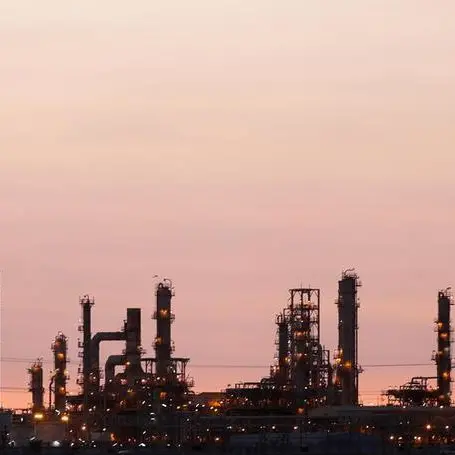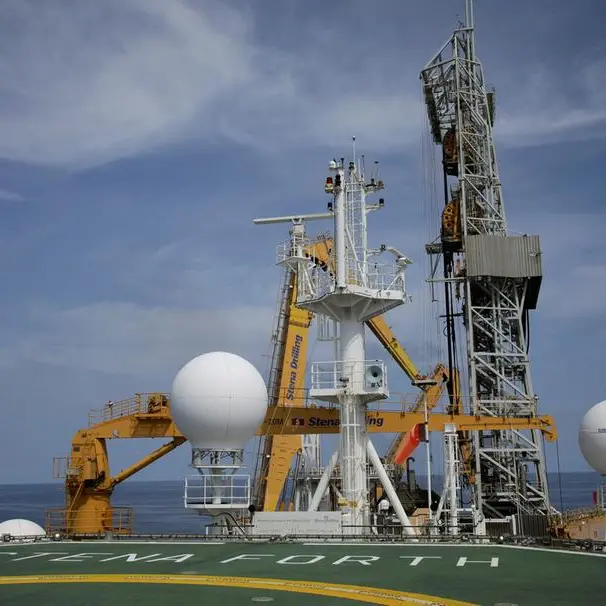10 May 2016
Oil prices are expected to climb to an average of $60 for barrel in 2017 from $40 this year, reaching almost $80 by 2020, Samba Financial Group said, but noted prices will remain "volatile," especially given the "elasticity" of US shale supply.
In view of greater oil consumption in China, India and the US, the demand will outstrip supply this year for the first time since 2013, Samba said.
"This does not mean that prices will suddenly shoot up; it will take some time for the large overhang of stocks to be worked down," Samba said in its latest report.
Moreover, prices are unlikely to rise in a steady trajectory: US shale output is likely to pick up again as prices rise, so the price ascent is likely to be volatile.
Yet, the simple fact is that prices at $40 or below are too low to encourage investment among IOCs (international oil companies). Prices will need to rise significantly in order to provide the supply to match future demand.
Thus Samba expects Brent to average $40 this year, before climbing to an average $60 in 2017 (helped by an expected weakening of the US dollar). The outlook for 2018-20 is obviously hazy, but with a good deal of IOC oil still "locked in," prices should continue to shift higher.
From 2020 onwards, prices should get a further lift as the depletion of US tight oil reserves becomes more of an issue.
"The defining feature of US shale output has been its resilience," Samba said.
The shale output has kept rising long after prices went into freefall, demonstrating both the adaptability of US producers and the financial necessity of keeping wells running to recover capital costs. But this gravity-defiance appears, finally, to have run its course.
The Department of Energy (DOE) data show total US output falling by some 500,000 bpd over the past 12 months. This was presaged by a fall in the rig count (a proxy for investment in the sector) and has also been catalysed by a more recent tightening in liquidity as banks and other potential investors take a more sceptical view of the sector's longer-term prospects.
The resilience of shale output partly reflects the fact that wells can be quickly drilled (or capped) in response to price changes. This is not true of most oil production, especially that from IOCs, which is often extracted from challenging terrain, be it onshore or offshore.
"When prices collapsed in mid-2014 it was not long before IOCs began to announce major cut-backs in both planned and current investment. To date, projects with some 20bn barrels of oil equivalent reserves have been shelved by IOCs," the report noted.
Unlike shale, they are unlikely to be revived if oil prices lurch upwards again: projects of this sort take many months (if not years) of planning and involve substantial upfront capital costs. To revive them, IOCs will need to see a sustained rise in oil prices that will generate enough revenue to exceed the full cycle costs of any project, Samba said.
Oil prices are expected to climb to an average of $60 for barrel in 2017 from $40 this year, reaching almost $80 by 2020, Samba Financial Group said, but noted prices will remain "volatile," especially given the "elasticity" of US shale supply.
In view of greater oil consumption in China, India and the US, the demand will outstrip supply this year for the first time since 2013, Samba said.
"This does not mean that prices will suddenly shoot up; it will take some time for the large overhang of stocks to be worked down," Samba said in its latest report.
Moreover, prices are unlikely to rise in a steady trajectory: US shale output is likely to pick up again as prices rise, so the price ascent is likely to be volatile.
Yet, the simple fact is that prices at $40 or below are too low to encourage investment among IOCs (international oil companies). Prices will need to rise significantly in order to provide the supply to match future demand.
Thus Samba expects Brent to average $40 this year, before climbing to an average $60 in 2017 (helped by an expected weakening of the US dollar). The outlook for 2018-20 is obviously hazy, but with a good deal of IOC oil still "locked in," prices should continue to shift higher.
From 2020 onwards, prices should get a further lift as the depletion of US tight oil reserves becomes more of an issue.
"The defining feature of US shale output has been its resilience," Samba said.
The shale output has kept rising long after prices went into freefall, demonstrating both the adaptability of US producers and the financial necessity of keeping wells running to recover capital costs. But this gravity-defiance appears, finally, to have run its course.
The Department of Energy (DOE) data show total US output falling by some 500,000 bpd over the past 12 months. This was presaged by a fall in the rig count (a proxy for investment in the sector) and has also been catalysed by a more recent tightening in liquidity as banks and other potential investors take a more sceptical view of the sector's longer-term prospects.
The resilience of shale output partly reflects the fact that wells can be quickly drilled (or capped) in response to price changes. This is not true of most oil production, especially that from IOCs, which is often extracted from challenging terrain, be it onshore or offshore.
"When prices collapsed in mid-2014 it was not long before IOCs began to announce major cut-backs in both planned and current investment. To date, projects with some 20bn barrels of oil equivalent reserves have been shelved by IOCs," the report noted.
Unlike shale, they are unlikely to be revived if oil prices lurch upwards again: projects of this sort take many months (if not years) of planning and involve substantial upfront capital costs. To revive them, IOCs will need to see a sustained rise in oil prices that will generate enough revenue to exceed the full cycle costs of any project, Samba said.
© Gulf Times 2016






















